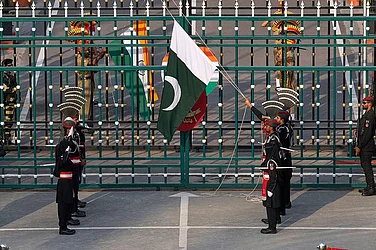RAILWAY BUDGET 2003-04 has spared the common man. With polls in mind, Union railway minister Nitish Kumar hasproposed no increase in passenger fares and freight rates. In fact, in a bid to take on the challenge byairlines, the minister has proposed a rationalisation of the fare structure of Rajdhani and Shatabdi trains,which will result in lower fares between most stations for these trains. 50 new trains are also proposed to bestarted this year.
Commemorating the 150th year of the railways, the railway minister announced 2003-04 as 'customer satisfactionyear'. "The aim of this year's budget has been to increase our (railways) earnings without a hike infares and freight rates. Issues like safety, security and providing basic amenities to the passengers willalso be of special importance," says IIMS Rana, chairman, Railway Board.
"The revival of railways was long overdue and the proposals of not hiking passenger fares andrationalisation of freight rates show government's commitment in that direction" says A C Muthiah,president, FICCI.
Passenger fares. This segment has largely remained untouched except for minor changes in thefare structure of Rajdhani and Shatabdi trains. The fares for these trains is proposed to be linked to thefare structure of mail/express trains. The basic fare for each class of Rajdhani and Shatabdi Express will befixed 15 per cent higher than the fares of corresponding class of superfast mail/express trains on a uniformbasis. This will result in lower basic fares for these trains between most stations.
Concessions. The concession age for male senior citizens has been lowered to 60 years from 65years earlier and they will now get 30 per cent concession on trains. For cancer and heart patients, Kumarannounced 75 per cent concession on all trains. The limit on accredited press correspondents' concessionaltravel as well as the distance restriction for their place of residence is proposed to be removed. Further,they would now be entitled for a 30 per cent concession in Rajdhani and Shatabdi Express trains also.
Concessional fares for non-peak period between July 15 and September 15 in 2003 in AC 1st Class and AC 2 tierhas also been proposed in all Rajdhani trains.
Freight rates. The minister announced rationalisation in the freight rate structure. Thenumber of classes in which freight is calculated are proposed to be reduced from 32 to 27. The classificationof certain commodities, where freight rates are currently too high, will also be rationalised. As a resultfreight rates for certain commodities such as diesel, LPG, crude oil, cement sheets, iron and steel will comedown. The proposed reduction in freight rates due to lowering of classification will range from 5.3 per centto 9.5 per cent.
In order to increase its share in transportation of petroleum products, the railways plans to enter intolong-term agreements with individual oil companies for further reduction in freight rates. "Post APM,petro companies are not reimbursed the cost of freight by the government. A reduction in the rates will have apositive impact as it would translate into lower costs in case prices of crude remain volatile in theinternational market" says Harshavardhan Dole, analyst, Dalal & Broacha.
The classification of cement, clinker, manganese ore and caustic soda liquid are also proposed to be reduced,which will lead to a reduction in freight rates by around 3.7 per cent. "Cement companies depend on therailways for more than 40 per cent of their dispatches and rail freight accounts for 5-9 per cent of salesvalue for the industry. Proposal to reduce freight rates is moderately positive for the profitability of thecement companies" says Jignesh Shah, strategist, ASKRJ Investment Management.
The annual plan outlay for the Railways has been pegged at Rs 10,670 crore for 2003-04. Taking into accountthe outlay of Rs 2,311 crore on safety related works through the Special Railway Safety Fund (SRSF), the totaloutlay comes to Rs 12,918 crore. This is Rs 603 crore higher than the revised estimates of last year.
Railways is eyeing higher revenue from freight traffic this year. But will it manage to lure a significantsection of road traffic to the tracks by just reducing freight rates? This year's budget may be a mixed bagfor railways but it has definitely given the common man and the corporates some relief.
From group site: www.outlookmoney.com. The authorcan be contacted at puneetwadhwa@outlookmoney.com
















